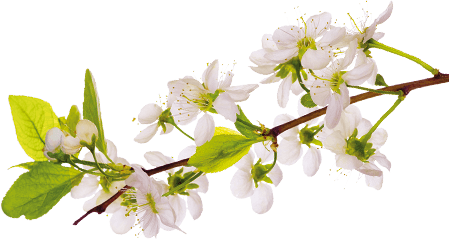Appraisals
When you see an antique violin the first thing you think of is how do I get a violin appraisal? You have either been shopping for a violin for you or your child or you just inherited a violin.
The first thing is to ask just what have you got? There are violins worth next to nothing and there are the ones worth 3 to 5 million dollars. Let’s dispel the legends and let you know that your chances of finding an original from the 16th or 17th century is as close to 0%. Don’t even hurt yourself by dreaming that this is not the case. If it had value of over $100,000 someone would have figured it out by now. Under this value we are getting into the law of supply and demand. There are lots of the violins for sale in the $1,000 or less range. The higher the price it fetches means there has to be a limited supply of what violinists and collectors want from a violin.
What gives a violin value? The first about the sound. A violin can be beautiful and it can be in fantastic condition but if there is something wrong and it is offensive to listen to, it will have no value except to sit in a collector’s cabinet. Thus there will be limited demand and a lower price. Second it must look good. This means that it is made from nice looking and nicely grained spruce and maple. It must be crafted to show off the grains and yet be functional in delivering the right amount of reverberation to give the violin the desired sound. The third priority is that it is in good condition. With lower valued violins in the first 2 categories, it can be cost prohibitive to try to bring them back to nice condition. The more valuable a violin is in the first 2 categories the less it matters what it costs to return the violin to “like new” condition. If you spend $2,000 to sell a violin for $2,000 you are just spinning your wheels. If you spend $15,000 bring back a $100,000 violin…I think you can figure it out.
Look is just not the wood but how the violin was made and by whom. By nice wood I do not mean that just the look of the grain is important but that the grain of the spruce shows whether the resonance of the violin will be good and therefore the sound will be good. Experts in violins can look at the grain of the wood and it has been documented what was grown where and when. IT is like grapes for the wine. Some orchards produce a distinctive taste that makes good wine. Well for violins some forests produce wood that made better violins. Germany was a hotbed of violin building at the turn of the 20th century because of the closeness of the factories to forests of nice maple and spruce trees that made for very nice violins.
At that point it is how the violin was made. Antique violins were made in 3 ways. They were handmade like Stradivarius violins. In some cases they were made in cottage factories where several people worked to build the violins. Each would have a job and someone would assemble all of the parts. As the industrial revolution progressed, the factories got bigger and moved out of cottages and into the cities. Even then it was how it was made. Cheaper violins may not even have blocks in the body of the violins. They used cheaper wood and left out steps for making better violins.
For most of these violins the maker is anonymous. It may have a stamp that says Antonius Stradivarius Cremonensis Faciebat Anno [data] (Latin for This was made by Antonio Stradivari of Cremona, in the year…) or some version of this. It may say copy of such or of one of the Amatis or of Jacobus Stainer. The most valuable are the handmade violins of the masters. The same is true even for present day violins. There are all the levels of competence now and there was then. So there are bad violins, nice violins, and it keeps getting better and better until you reach the apex which is the violins of the masters. There are all levels of handmade violins a there are all levels of factory made violins.
Once you get past about $5,000 for a violin, documentation really starts to matter. It is helpful below that point but after that it truly has a strong influence on value. People spending that amount want to know where the violin was made and by whom. Then they can make sure that it is authentic and then one can judge whether it is a good version of the Luthiery’s work or one of the lesser ones. Even Stradavari had better ones in his “golden age” of violin making from 1700 – 1720ish.
There is one final facet of condition to address and that is the kind of luthiery work was done on it since it was first made. Any violin that is over 100 years old has been to the luthiery shop at least once. I stated earlier that all luthiers are not created equal and therefore a nice violin that has been badly repaired by a less than fully competent luthier will lose value if he has permanently damaged the violin. Amateur luthiers can perform horrors on nice violins that reduce their value to a fraction of their potential. Any violin over 15 years old probably had to be modernized from a Baroque set up. This is a challenging job and many old violins were probably lost because this was not done properly. So any violin over 150 years old will be limited supply. That is one way that the price goes up.
Now that you have the basics you can now do an approximate assessment of your violin. You have to understand that there are 3 parts to the valuation of the violin under 15,000. First part is the value of the violin for what it is. Call it the finder’s fee. The second part is the cost to hire a good luthiery to fix the violin and bring it back to perfect playing condition. The third part is the marketing. Each part is 1/3 of the value. So if you have a nice violin that does not need much fixing up there is more potential.
So you get 1/3 of the best price for finding it. The second third goes to you or the luthier depending on how much work you have to hire him to do. The final third is split between you and whoever sells it. It is like real estate. You get the listing commission and the shop gets the sellers commission.
If you have a violin with the potential of being worth $2,500 to $3,000 or more, it is best to take it to a qualified luthiery to have it properly appraised. If you are interested in having a look or possibly purchasing a violin professionally priced between $2,000 and $3,000 you can do so here violins for sale between $2,000 and $3000 You have to be careful as this skill is not cheaply bought. A proper written appraisal will cost $200 plus or minus a few dollars. Work is on the order of 480 to $100 per hour plus parts. To fix a violin properly takes time so do not expect this to be fast as good luthieries are also very busy.
In most cases violins are a passion and the investment has emotional rewards as well. if you are lucky enough to purchase a nice violin and can get it fixed up cheaper than buying one fixed and you love playing it, then you have the added joy of finding a bargain.
If you just want to sell it and put it in the hands of someone who will love the violin, then marketing is a whole other topic. As far as we can tell it is a lot like fishing. It takes a long time to get a strike and then it is even harder to land a sale.
See Types & Labels











